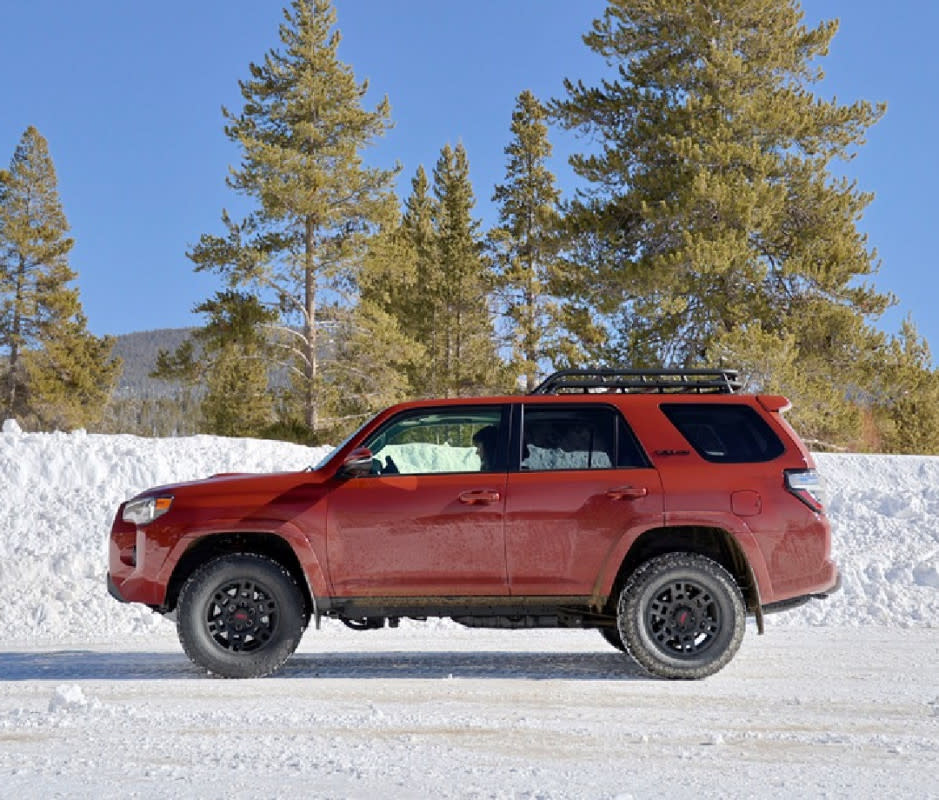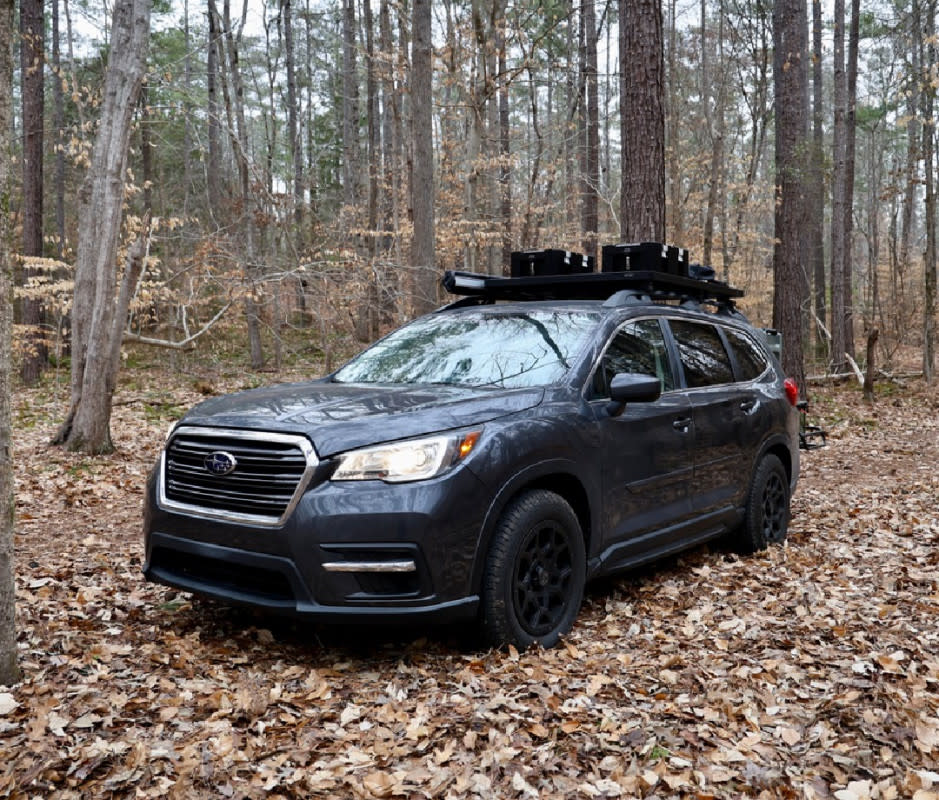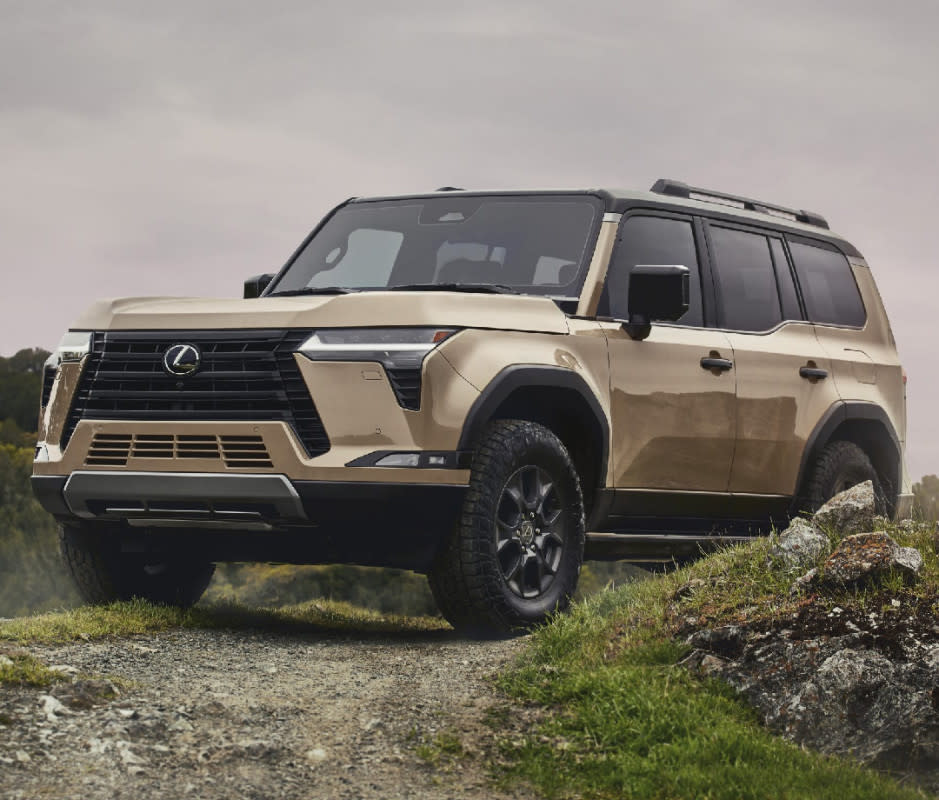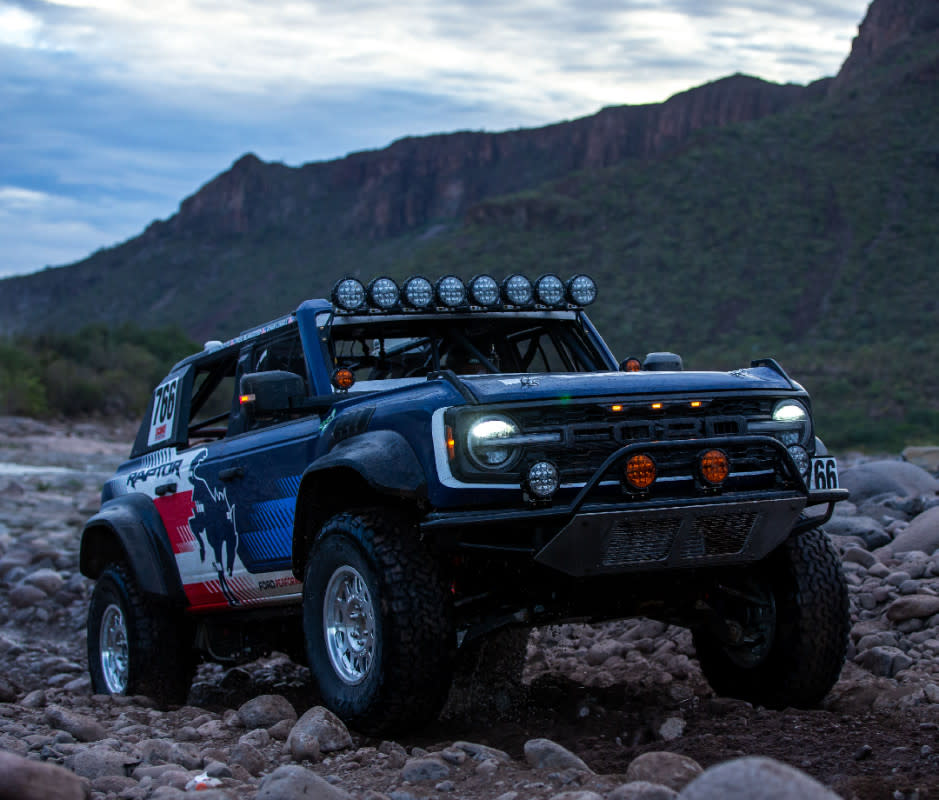4x4 VS AWD, Explained: What to Know Before Going Off-Road
For a layman chatting to a mechanic or gearhead, automotive jargon can seem like a foreign language. To the average person on the street, terms like torque vectoring, locking differentials, pinion gears, and half-shafts are meaningless. However, there's a pair of terms that's more confusing than they need to be: 4x4 vs AWD. Knowing the difference is a must for off-roading beginners (the same goes for differentiating ATVs vs side-by-sides).
Many off-road-capable vehicles these days are marketed as having one of these two systems, and the differences between them are often confusing to consumers. Both send power to all four of the car or truck's wheels, but the way in which they do so is different. A true 4x4 system is also significantly more capable for extreme off-road use than an all-wheel-drive system, making the distinction even more important to understand.
What Is a 4x4?

Stinson Carter
Four-by-four, also known as part-time four-wheel-drive or 4WD, is a system that can be set to transfer power to either two or four wheels. Generally this is accomplished through the use of a transfer case, which the driver of the vehicle can engage or disengage with a lever, knob, or button inside the vehicle.
Many 4x4 vehicles have a two-wheel-drive setting for everyday use, as well as high-range and low-range settings, labeled as 4-hi and 4-lo. These options effectively give the driver more power and control at low speeds. For example, selecting 4-lo would help crawl up a muddy slope at 5 mph. Vehicles with true 4x4 systems are ideal for heavy off-road use, such as climbing steep hills, crawling over boulders, and tackling rutted muddy trails.
Related: Best Dirt Bikes of 2024 Are the Most Fun You Can Have on Two Wheels
What Is AWD?

Stinson Carter
All-wheel-drive, also called full-time four-wheel-drive or AWD, typically powers all four wheels at all times. Many modern AWD vehicles have anti-slip systems to distribute power from front to back or side to side. So, if one wheel begins to spin, power is sent by a computerized or mechanical device to the other three in order to help the vehicle keep moving. Most AWD vehicles don't have user-controlled settings to force the vehicle into two-wheel-drive mode, or high- or low-reduction gear transfer case settings.
AWD excels on loose surfaces, such as gravel, sand, or snow, and is often used in off-road rally cars for this reason. However, it isn't ideal for low-speed crawling over extremely tough terrain.
Related: Preparing Your Off-Road Rig? This Is Your Most Important Decision by Far
What Should You Consider Before Choosing an AWD or 4WD Vehicle?
“Understand what you’re buying,” says off-road expert Dave Rees. “Familiarize yourself with what you want to do and what the capabilities of the vehicle are.”
Rees says AWD is great for daily use, and something like an AWD Subaru is great on gravel. But if you really want to go beyond gravel, you may need 4x4. There are variations that offer a little of both worlds, such as the new Lexus GX, which is AWD but has a locking center differential like a 4x4.
“Both systems [AWD and 4x4] are bound by physics in that you can only pass over an obstacle if you have enough clearance and enough traction,” says Rob Shydo, an off-road expert with Exploring NH. Shydo explains that clearance can differ between AWD and 4WD vehicles, even if they have the same or similar ground clearance on paper.
Related: The Best Sport Watches for Every Type of Adventure

Courtesy Image
Case in point, modern AWD vehicles that most would consider a car, like an Outback or Crosstrek, now have ride heights that can challenge some of the newer SUVs and trucks—like the new Lexus GX and its sibling, the forthcoming 250 Series Land Cruiser. The Subaru Crosstrek Wilderness model, which is optimized for playing in the dirt, boasts a 9.3-inch ground clearance. The new GX and Land Cruiser only give you 8.9 and 8.7 inches, respectively.
But, once you run out of ground clearance, or “talent,” as he calls it, you may have more options with a 4x4 vehicle such as a 4Runner than you would on an AWD, such as a Subaru. On the 4Runner, the lowest part most at risk of hitting an obstacle is likely part of the rear axle, so “if you run out of talent on a trail, a fairly strong piece of metal would hit the obstacle.”
Related: The Best Off-Roading EVs Can Tackle Any Terrain
But there are also other areas under the vehicle that may offer higher clearance, so with 4WD you might be able to maneuver around an obstacle on the trail. With AWD vehicles, however, the first part of the vehicle to touch the ground can be more delicate—like part of the suspension, the exhaust system, or even an oil pan or gas tank.
So not only is the first point of contact likely more vulnerable on an AWD vehicle, but there may also not be as many high points underneath to help you maneuver around an obstacle. In short, if you plan to use your vehicle to traverse highly technical terrain, you’ll have a bigger margin for error with a 4WD.
Do You Really Need 4WD?
If you’re choosing between a 4x4 and AWD, it’s important to know AWD can handle what most people throw at it in the most common off-road scenarios.
“People think they have to have a Bronco with 50 grand in mods, but actually, no, you don’t.” says Randy Nonnenberg, founder of the online used vehicle auction site Bring a Trailer.

Courtesy Image
Nonnenburg has changed his thinking about what you actually need for off-roading. “Stuff I thought was a cool off-roader as a kid—a Jeep CJ-7, a Land Cruiser, an early Bronco—you can do better off-road with a Subaru Outback. Vehicles are just so capable now.”
Pros and Cons of 4x4 VS AWD?
Pros of 4x4
Typical 4x4 vehicles have more ground clearance than AWD
More direct control for specific off-road situations
Better for people who seriously go beyond pavement and gravel
Can be flat towed in neutral
Low range gearing is better for towing in some situations
Cons of 4x4
Heavier systems than AWD
More driver engagement required
Less fuel efficient than AWD systems
Can require more maintenance, adding to cost of ownership
Pros of AWD
Less driver input needed
Better for most people in realistic driving scenarios
More fuel efficient than 4x4
Cons of AWD
Typically on crossovers or cars with lower ground clearance so skid plates needed for off-roading
No direct manual control
No locking differentials
Tires wear out faster than 2WD systems